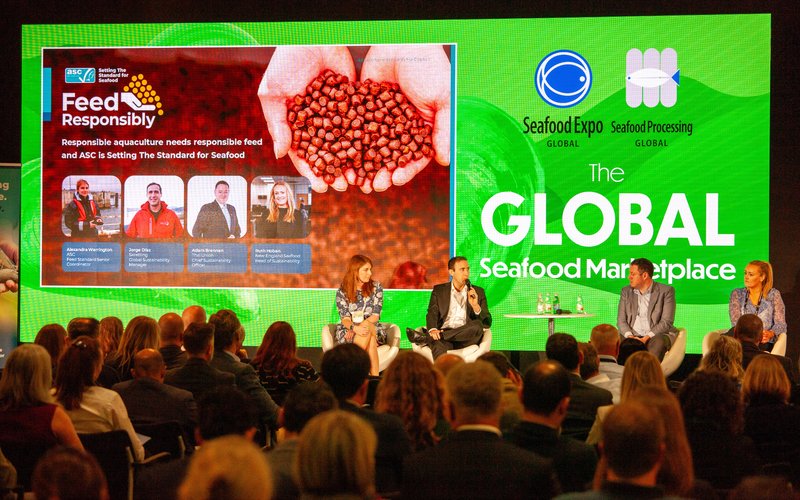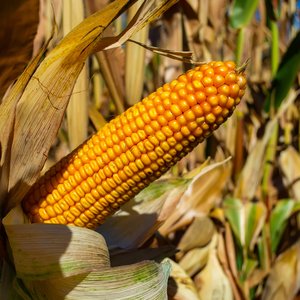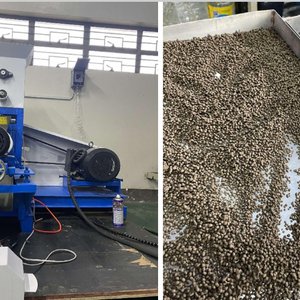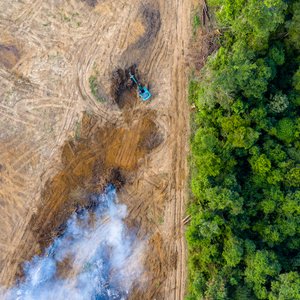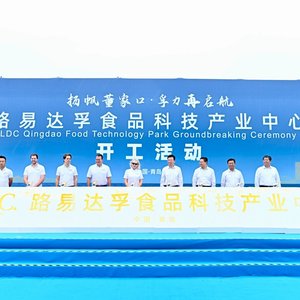The Aquaculture Stewardship Council (ASC) released its Feed Standard in 2023. Three feed companies, Vimifos, Skretting and Thai Union, have already received certifications for some of their feed mills, with more in the pipeline and numerous other feed companies currently in the initial audit phase. The certification process takes approximately 4.5 months from the moment a feed company signs its contract with an accredited Conformity Assessment Body (CAB). The standard covers legal, social and environmental requirements for both the feed mill’s own operations and for the suppliers of ingredients used in the feed mill.
Requirements
ASC Feed Standard requirements apply only to those ingredients in more than 1% of the total annual volume, excluding ingredients that are brought in much smaller volumes such as feed additives.
For marine ingredients, there is basic due diligence for risks such as IUU fishing and forced and child labor risks. There are additional requirements for whole-fish marine ingredients, which include at least 50% of what the feed mill is purchasing must come from at least a fishery improvement project and increasing sourcing from more responsibly managed fisheries such as MarinTrust approved and ultimately MSC certified over time.
On the plant-based ingredient side, the assessed risks are forced and child labor, illegal and legal deforestation and land conversion. In terms of animal proteins, they have to be assessed for risks, but ingredients such as insect meal and PAPs will not be subjected to the same level of scrutiny as soy or marine ingredients, for example.
“In terms of the raw material assessment, it is much stricter for plant and marine ingredients than it is for what we would say are alternative ingredients or land-based ingredients such as insects or PAPs. In that way, there is a bit of an incentive to use those ingredients as the assessment is simpler,” ASC’s Feed Standard senior coordinator, Alexandra Warrington, told Aquafeed.com at Seafood Expo Global.
For labor, requirements at the feed mill include no forced or child labor and others on working conditions like how wages are paid, hours, annual leave, discrimination, etc. “The social requirements now are one of the main pillars of our program. It's going to be the same in the new ASC Farm Standard as well,” Warrington said.
In terms of environmental requirements, the standard requires monitoring and reporting of the feed mill’s environmental interactions and emissions, not just greenhouse gas but also energy use, water use, effluent discharge, etc. “Currently, with greenhouse gases, we are not setting targets or limits. We are asking for the data to be reported because it is also used in farms as well. In the future, we could set limits or targets but we want to collect the data first to ensure we have appropriate baselines,” Warrington said.
Standard implementation
The feedback from the feed mills that have already been certified was that it has been challenging but rewarding since it has forced them to look closer at their supply chains.
“Companies come into this for maybe different reasons. Generally, there is an eagerness to understand what our requirements are, and on the face of it, they do appear complex. When we were developing the standard in consultation with different stakeholders, including industry, one thing we heard was the need for flexibility on how to assess risks because there are multiple different supply chains in different locations with different issues,” Warrington said. “And I think as long as we are clear about what the actual risk is, what we are doing is offering flexibility in how that risk is addressed. However, it is hard to give flexibility without adding a little bit of complexity. So, we are aware that we can and will continue to support feed mills to understand the requirements.”
For the bigger feed mills, it is going to be easier because normally they have already got some kind of risk assessment approach to suppliers. “They would have to look at what they have currently and hopefully adapt that to include the ASC requirements. For the smaller feed mills, it might be trickier to get that initial process built in,” Warrington said.
Variations between regions are also expected. “Depending on the supply chains, some are quite short for the ingredients and maybe there is better traceability there. But for others, they are quite complex. That is why we are working with feed mills and developing training on things like due diligence,” Warrington said. “When the standard was developed, consulting with the industry, the feedback was that flexibility is needed and we have it, for example, by offering different tools to assess the risk.”
And what are the benefits for feed mills to become certified? “The ASC Feed Standard is an integrated part of our program, so ASC certified farms are going to be required to source ASC compliant feed so feed mills will have market access to the farms. Moreover, there are wider benefits of the ASC program for processors and retailers that have made commitments in terms of deforestation, meeting emission targets, etc. The supply chain is more transparent and they will be able to give more confidence to buyers. If a retailer for example has concerns about sourcing from a particular country maybe for a reason that isn't even addressed by the ASC standard, they can find out easily where this is flowing through its supply chain. It can help them meet any legislative requirements as well coming through with EU legislation for example,” Warrington explained. “We are a bit more ahead of the curve because everything is moving toward more traceability and transparency in supply chains. The standard also addresses risk which can mitigate financial impacts.”
Recently, some reports have questioned some certification schemes. “A certification scheme is not foolproof but it is creating a system that provides some level of assurance. A standard is only as good as how it is audited. ASC’s audit process has a comprehensive range of requirements to ensure credibility. Transparency plays a vital role in the robustness of the audit –this is why all ASC documents and audit reports are publicly available through our website. Draft audit reports are also published before they are finalised,” Warrington stated.
The challenge of adopting the standard
At Seafood Expo Global in Barcelona, the ASC hosted a panel event, Feed Responsibly: Why Responsible Aquaculture Needs Responsible Feed, where industry players shared how they are adopting the ASC Feed Standard to drive transparency, social and environmental improvements in feed supply chains.
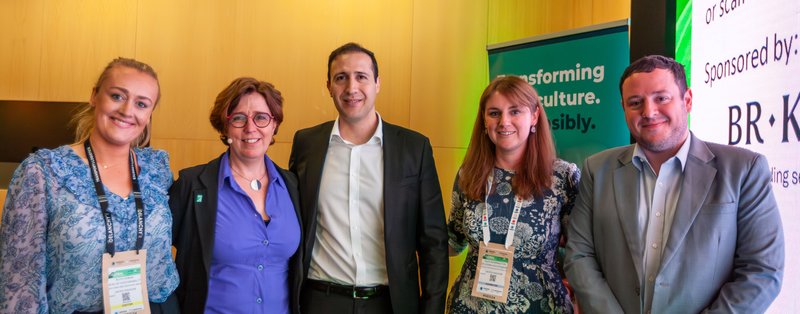
From left to right: New England Seafood’s Head of Sustainability Ruth Hoban; Esther Luiten, Global Director Program Development at ASC; Jorge Díaz, Skretting’s Global Sustainability Manager; ASC’s Feed Standard Senior Coordinator, Alexandra Warrington; and Adam Brennan, Thai Union’s Chief Sustainability Officer. Credits: ASC
“There is a growing interest in aquaculture from a retail perspective – the importance of farmed fish is now widely recognized. Particularly from UK retailers, there is an emerging market demand for farmed fish that have been fed responsibly. New England Seafood, just like other processors, has a key role to play in understanding the ASC Feed Standard and building awareness of its requirements with our partners,” said New England Seafood’s head of Sustainability Ruth Hoban.
Thai Union is one of the first companies that received ASC Feed Standard certification for their Mahachai Plant, located in Thailand’s Samut Sakhon province and their Ranot Plant in the Songkhla province.
“Thai Union released a new sustainability strategy in the middle of last year and we have done a lot of work on the tuna space for quite a long time. We wanted to replicate our ambition on the farm side, for shrimp in particular. Feed has a key impact and the standard actually touches multiple commitments that Thai Union has around climate change and responsible fisheries,” said Adam Brennan, Thai Union’s Chief Sustainability Officer.
“One of the things that we found the most difficult was the traceability of raw materials. We found several raw materials that were not compliant, and so we had to seek out new suppliers. This was particularly a challenge for us in Thailand. Therefore, we had to create those new supplier relations for them,” Brennan said.
“One of the other opportunities for us was, as part of our sustainability ambitions, being able to redefine what it means to be a leader in sustainability. We believe that that is a commercial opportunity for the industry,” Brennan said.
Skretting was another of the first three companies to receive certification for two of its Chilean feed mills. “At the beginning, we thought that it was extremely challenging but when we started doing some operations, we said, this is not bad, and we need it. It is helping us a lot to have a better understanding and visibility of the different risks that we have. In terms of suppliers, this is a standard that is coming for the whole industry. If suppliers want to be relevant for the other feed companies, then you would have to work on this as well. I think that was a turning point because it changed the relationship that we had with them because they also saw it as an opportunity. I think this value chain or supply chain approach is helping us to step up as an industry,” said Skretting’s Global Sustainability manager, Jorge Diaz.
“Getting the certification helps us be in a better competitive position because we can better serve our customers and they can better serve their own customers, the retailers. They are asking for much better visibility and identification of all the risks that are connected with our supply chain. Having this standard is a very big step forward,” Díaz stated.
“We believe it is the right thing to do, but we need to bear in mind that working and implementing this standard also comes at a cost because the availability of raw materials can become limited. That means that it gets more expensive and then if it gets more expensive for us, it gets more expensive for the farmers and therefore for the retailers. So, I truly believe that this needs to be a whole value chain approach in which everyone is connected and aligned,” Díaz said.
“Feed is fun (no, really it is!) as it is such an interesting and challenging sector with enormous impact. Collaboration amongst stakeholders and across the supply chain is essential to ensure this impact is positive,” Warrington concluded.
ASC moved the deadline from January 2025 to October 2025 for ASC certified farms to change their supply of feed to come from mills that have been certified against the Feed Standard. Feed mills that get certified in 2024 will not have to pay licence fees on the volume of ASC compliant feed they produce this calendar year.


